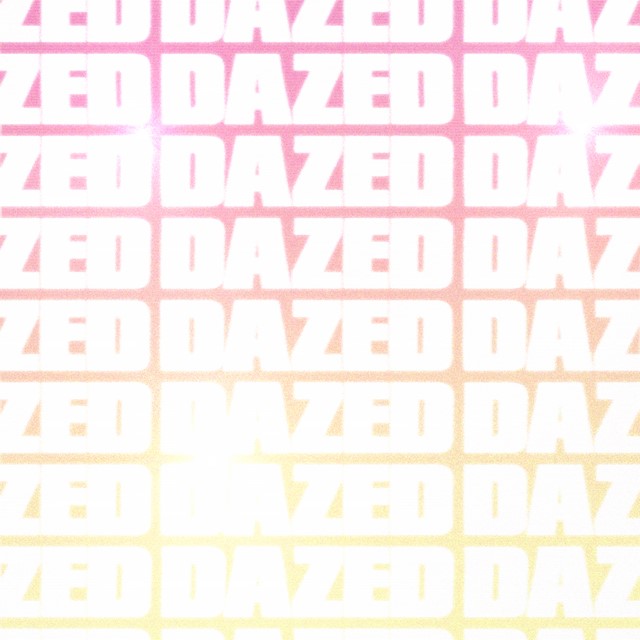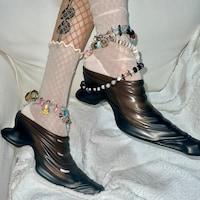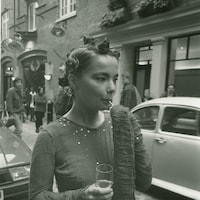Christopher Bailey isn’t the only designer flying the rainbow flag
Fashion is a very gay industry. That’s not a stereotype, but an exaltation. And it makes sense really: it’s about costuming, escape, beauty and adornment – and when our identities and our bodies are so often policed and politicised, clothing offers us the power to choose the way in which we are seen, it gives us agency.
But while fashion, in so many ways, has lifted up the LGBTQ+ community – whether that’s supporting models through transition, or raising funds for the ongoing AIDS Crisis – it’s often rare to see actual LGBTQ+ culture referenced and championed explicitly on the runway.
So it was a welcome surprise, after nigh on 17 years at Burberry, that Christopher Bailey’s final collection was dedicated to LGBTQ+ communities: something which manifested in rainbow motifs appearing across most of the traditionally English brand’s garments. Whether a blaze of rainbow through the classic Burberry check, or a giant coat-of-many-rainbow-colours which closed the show on the back of Cara Delevingne, the offering felt significant. While many are critical of the rainbow flag becoming an anodyne symbol of depoliticised Prides and brands using marginalised identity signifiers to rake in the cash, Bailey and Burberry also put their money where their mouth is: making donations to three charities – Trevor Project, ILGA, Albert Kennedy Trust – all of which work to support, mentor and offer resources to LGBTQ+ people worldwide.
In celebrating Burberry’s pride in Pride, then, here are eight times fashion designers honoured LGBTQ+ culture in different ways.
RAF SIMONS SS17
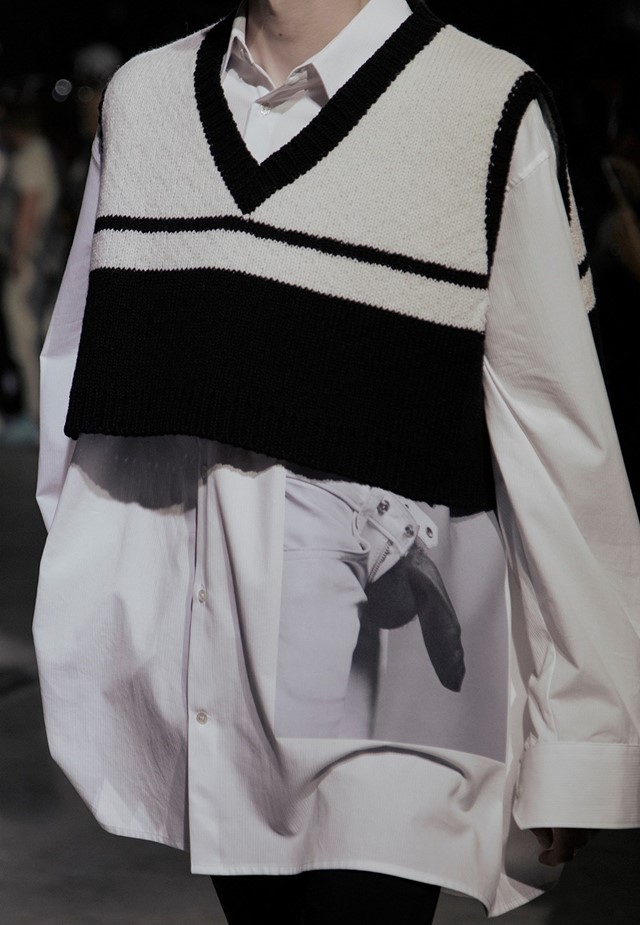
Throughout his career as a photographer, Robert Mapplethorpe was in equal parts celebrated and censored. At the time he was working, from the late 60s through the 80s, the images he took were radical; whether shooting images of men fisting or himself with a whip in his anus like a devil’s tail, he was constantly working to capture the beautiful and subversive underbelly of gay culture in New York. The decision to collaborate with Raf Simons came from the Estate of the late, great artist, who apparently told Raf he could do “anything.” So, he did – and made a collection dedicated to Mapplethorpe’s photography, appliquéing full (frontal) images form Mapplethorpe’s archive onto shirts, jackets and trousers. When designing the collection, Simons also got in touch with all the subjects of the 74 photographs he featured in his collection, in an effort to retrace the steps of Mapplethorpe himself. It was a perfect queer collaboration which extolled the work of the genius photographer, without censorship.
WALTER VAN BEIRENDONCK SS96
No designer has quite pulled political punches in favour of the LGBTQ+ community more than the Belgian visionary Walter Van Beirendonck. Throughout his long career, the designer has taken on HIV and AIDS, BDSM and fetish, turning buttplugs into jewellery and sending models down the runway in huge phallic papier maché hats. One of the most legendary collections – SS96’s ‘KILLER/ASTRAL TRAVEL/4 D-HI-D’ – was a response to the HIV and AIDS crisis. But it wasn’t mournful or a picture of loss and distress: it was a celebration of sex, of club culture, ecstasy and dancing – while incorporating important messages about condoms and safe sex on giant whoopee cushion masks, masks which read: ‘Terror Time’, ‘Get Off My Dick’, ‘Synthetic Hell’ and ‘Blow Job’, to name a few. Van Beirendonck archive and work stares issues in the face, most often occupying the radical, perhaps more queer, position.
ASHISH AW17
It’s no secret that sequins are the unofficial uniform of the best kind of gays (LOL, don’t @ me), and it’s something that Ashish knows all too well, too. Everything in his arsenal is about sparkle, about uplifting and finding the joy - even in his more politically-leaning collections. But Ashish has been referencing the rainbow in his work for as long as he’s been working – both in its colours, like for AW16, when every model was dressed in one blocked colour, the final line up a tribute to all the colours on the rainbow, to the people it’s supposed to represent: his beautiful leather bear who stomped the runway in blue sequins and latex gloves back in AW17, or that time when J Boogie and Larry B held hands and strutted in heels in rainbow sequinned two pieces.
JW ANDERSON AW16
JWA has always had the backs of the LGBTQ+ community: lest we forget it was he who ignited a gender-questioning fire in fashion back in AW13 when he, unflinchingly, put his boys in skirts. Today, he shows his menswear and womenswear together, and asks us to see the garments in conversation, not apportioned to separate gendered weeks. Although his latest collection Trojan-horsed subversive gay erotica into his designs, His cleverest (and gayest) trick was his collaboration with the infamous gay hookup site Grindr, the platform upon which he chose to live stream his AW16 show to those thirsty for fashion, as well as a fuck. It was smart, and it paid respects to an important part of gay culture: the hookup.
THIERRY MUGLER SS92
“She’s the fabulous Lypsinka” boomed over the loudspeaker as the legendary drag artist opened Thierry Mugler’s 1992 show at the Century Plaza Hotel in LA. Framed by two henchmen, the world’s foremost lip sync artist stripped slowly through four different Mugler looks, the performance descending into a manic vision of the drag legend screaming and rolling around on stage. Mugler’s shows often plundered the high-camp, and off the runway he employed incredible queer talents such as Mr Pearl, or directed videos like George Michael’s “Too Funky” which, as well as Lypsinka, featured New York icon Joey Arias, the drag artist who found fame working the floors of Fiorucci’s original New York flagship.
HEATHERETTE AND AMANDA LEPORE
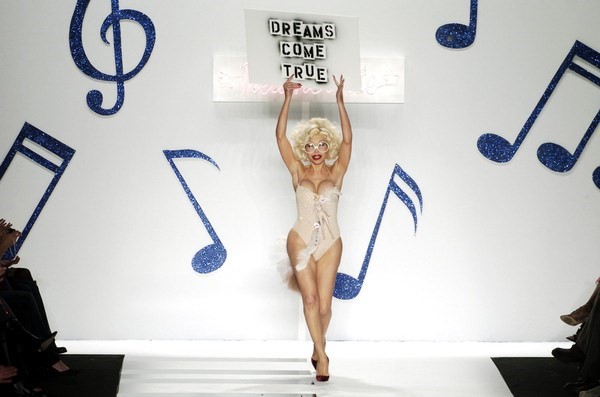
There’s nothing more life affirming than watching trans icon Amanda Lepore – “the most expensive body in the world” – walk the AW06 Heatherette show with a placard which read “Dreams Come True” to Liza Minelli singing “New York, New York”. Heatherette, the cult New York brand, was one of the first of its kind: founded from club culture, inspired by the trash couture that gave NYC its legendary nightlife identity. The brand made waves on the New York fashion scene between 1999 and 2008, years during which lead designers Richie Rich and Traver Rains (both queer icons in themselves) told press they just “lived in the club.” They continued to make Lepore their muse, culminating in perhaps the best makeup ad ever: their 2004 LaChapelle directed video for MAC, in which Amanda paints her whole body in pink lipstick and rides through the desert on the bonnet of a car. The future liberals want.
HOOD BY AIR SS17
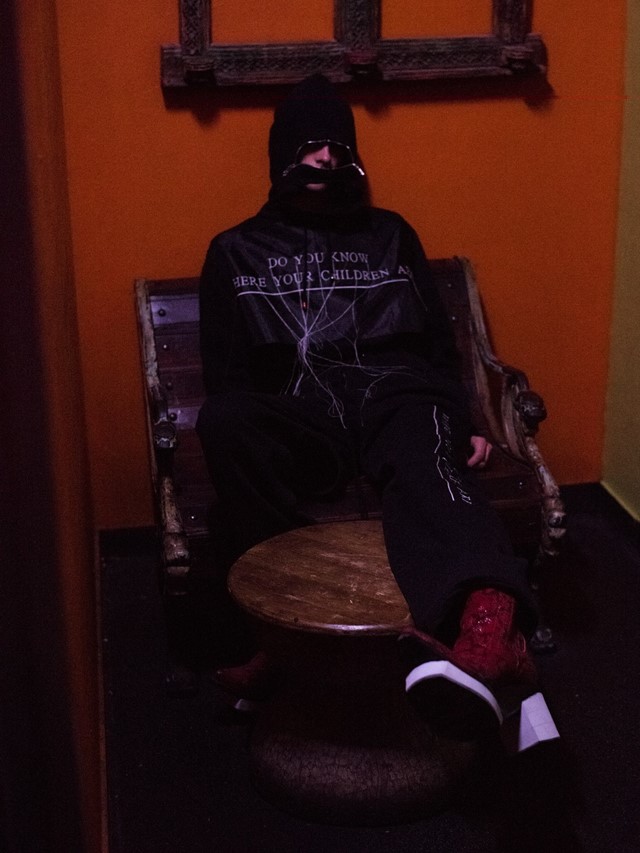
“I told them to cruise and play with the crowd, to act like they were trying to get a little action.” Hood By Air, Shayne Oliver’s brand which is currently in remission, often referenced queer culture – both in its thoughtful and diverse casting, and in the imagery the clothes created. It made sense, then, that the designer decided to show the brand’s SS17 collection inside the twisted narrowing corridors of a gay sauna (which are typically more about finding the right orgy, less about finding a moment to relax) named Sun City where models were told to interact with the fashion audience, while red lights swung setting the seedy, sexual scene.
CHANEL COUTURE SS13
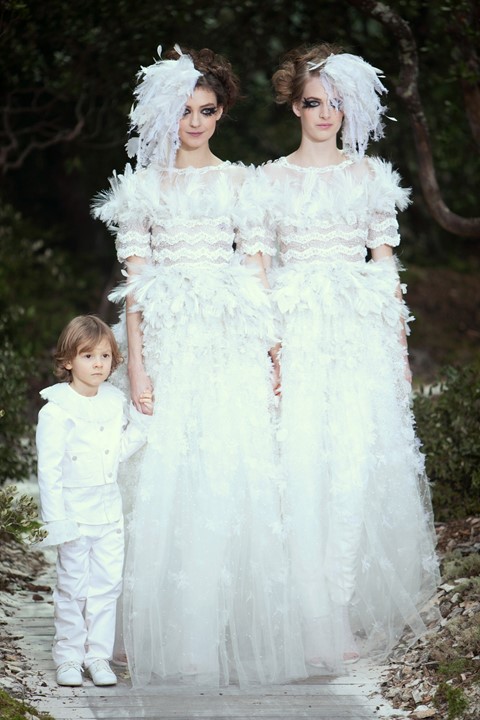
Aside from a few notable examples, lesbians are pretty underrepresented in the fashion industry. (Hence why new magazine DYKE ON exists – read about it here!) So it was actually pretty hard to think of a runway moment that celebrated queer women beyond simply inviting them to model. One that does stand out is Chanel’s SS13 couture show – where Karl Lagerfeld eschewed tradition and sent out not one but two brides. Holding hands in matching white dresses, models Ashleigh Good and Kati Nescher closed the show along with Lagerfeld’s godson Hudson. The designer said the finale was a symbol of support for the movement to legalise gay marriage in France (which became legal a few months after the show). “I don’t even understand the debate,” he reasoned at the time. We’re with you on that, Karl!
